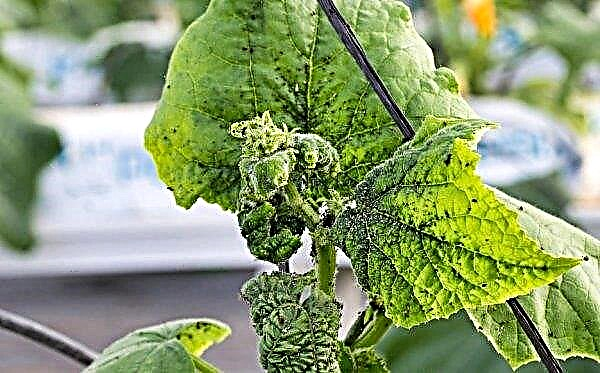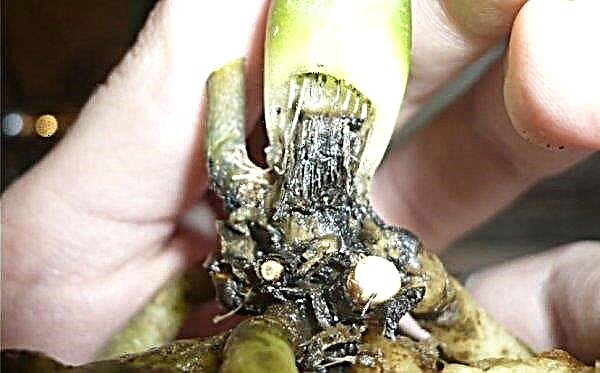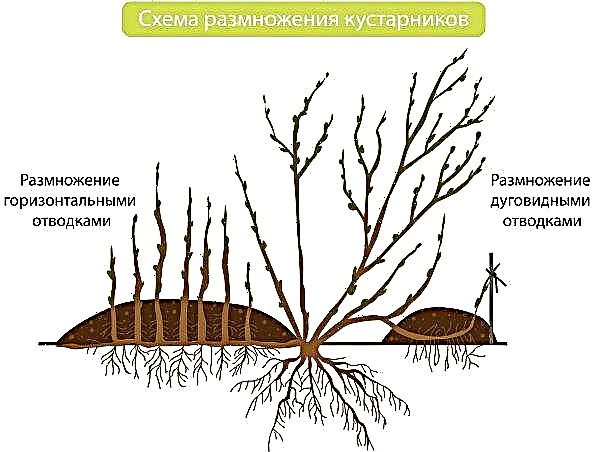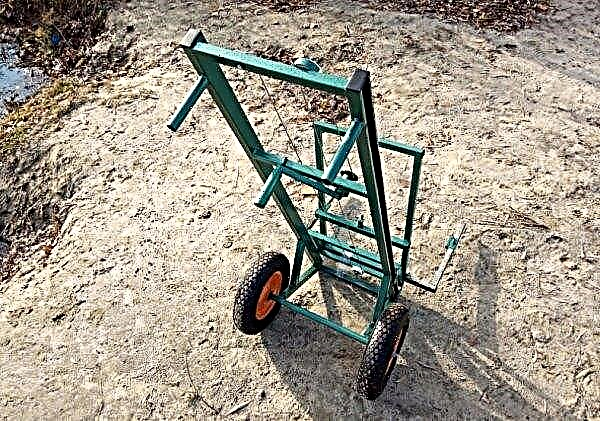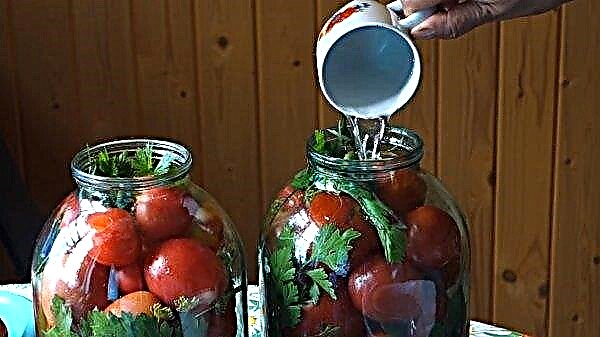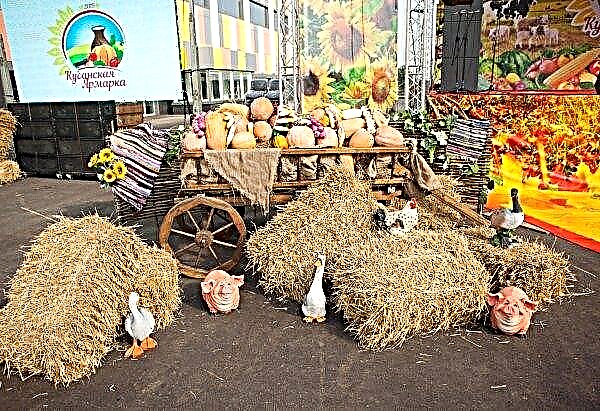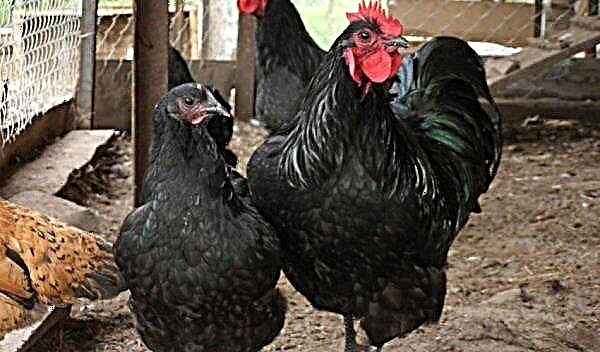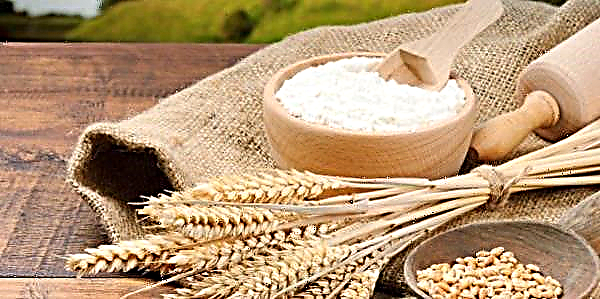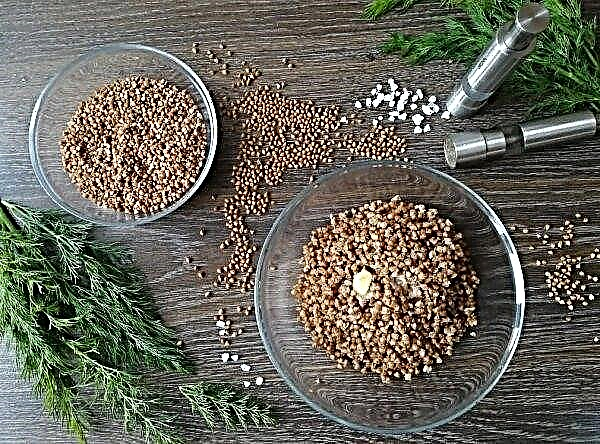For a long time, the center, or as it is popularly called by the people - “broken heart”, was undeservedly forgotten and was not used to decorate the sites. And not so long ago, landscape designers again drew attention to this plant, actively using it to compose decorative compositions. Tips on how to plant and care for the dicenter in the country or in the garden are collected in the article.
How to plant a dicenter in open ground
The dicenter is known and loved due to the beautiful and original shape of the flowers - they resemble a heart. With proper care and the choice of a place to grow it becomes the decoration and highlight of any flower bed. Planting a dicenter and taking care of her is easy. She is not particularly demanding on growing conditions; she does not need a lot of attention.
What time do they plant
For planting, 2 planting periods are recommended: in early autumn and in April - May. The timing of planting a plant in open ground depends on the climatic conditions in the region. In areas where warm winters, autumn planting is possible. Where frosts begin in November, it is better to drop the dicenter in the spring. The flower must have time to adapt well in the ground before the onset of cold weather.
Important! Since the “broken heart” flower does not tolerate moisture stagnation, it cannot be planted in lowlands and in areas where groundwater stagnates and waterlogging is observed.
Landing algorithm
For dicentres, a shaded or semi-shaded area should be chosen. This plant does not tolerate direct sunlight. Under the shade of the trees, it later begins to bloom, but at the same time the flowers last longer and the petals are painted in a more saturated color. The soil for the described ornamental plant requires fertile.

In order for the dicenter to grow and develop correctly, it is necessary to observe the landing technology recommended by specialists. She definitely needs good drainage, as moisture congestion can be fatal. During spring planting, soil preparation at the site should be carried out in autumn. It must be cleaned of plant debris and dug to a depth of 20–25 cm. During digging, humus (3-4 kg / m²) must be added. Then irrigate with complex mineral fertilizer (20 g / 10 l of water).
If the earth is too heavy, it needs to be improved by removing the top layer and putting in its place a mixture of garden, deciduous soil, large river sand, humus (2: 2: 1: 0.5). In clay soil, in addition to these components, add 1 part of peat.Did you know? The heaviest flower in the world is rafflesia, or cadaveric lily. It can reach a weight of 10 kg.
When landing, you need to perform the following steps:
- Prepare a landing hole 40 × 40 × 40 cm. If you plan to plant several bushes, then the distance between them should be observed at 50 cm.
- Lay a drainage layer of expanded clay, broken brick, pebbles, coarse sand at the bottom of the hole.
- Prepare a soil mixture to fill the hole by mixing loose garden soil with compost. It is also advisable to add lime powder.
- Set the flower seedling in the center of the pit.
- Spread the roots.
- Fill the voids with prepared soil mixture.
- Lightly seal.
- Watering.
Video: landing and care of the center
Reproduction dicentres
Dicenter can be propagated in two ways: seed and vegetative. Gardeners most often resort to dividing the bush and cuttings. The seed method is unpopular. This is because the seeds do not germinate well. In addition, plants grown in this way enter into bloom only in the third year of life.
From seed
Seeds must be sown in the fall. So they will undergo a natural stratification and will sprout next spring. After sowing, the soil should be covered with a film to protect the seeds from frost. In the spring, after the appearance of sprouts, it is necessary to produce the first loosening and mulching. If return frosts are predicted, then it is worth again to cover the plantings.

Division of dicentres in the fall
The division of the bush should be carried out not only if you want to carry out the reproduction of dicentres, but also regularly, every 3-4 years. The fact is that when the root system of this decorative culture grows strongly, it begins to rot. It is recommended to divide the flower in the spring before it begins to actively grow and bloom, and in the fall.
To get the shares, you must proceed as follows:
- Carefully dig out the bush.
- Divide the roots with a sharp disinfected knife into 2-3 parts, in each of which 3-4 strong shoots should remain.
- Place the dividers in pre-prepared wells.

Cuttings
Cuttings are harvested in the fall, during pruning. They are cut from young shoots or root shoots. For rooting, cuttings are placed in a greenhouse. In the spring, when stable heat is established, they are transplanted to a constant place of growth in open ground.
Important! Since in many varieties, dicenter organs contain toxic substances that can lead to irritation of the skin, it is necessary to work with the plant with gloves.
Outdoor care of the dicenter
If the site for growing the described plant is selected correctly, and the soil matches its preferences, then it will be easy to care for the flower culture. The main thing is to monitor the condition of the soil in order to prevent it from drying out or waterlogging, as well as clogging. To obtain abundant and long flowering, it is necessary to periodically fertilize. In order for flower bushes to grow and develop correctly, they need to be nipped and stepsoned.
Watering
How often you need to water the described crop depends on weather conditions (temperature, frequency of rainfall) and the age of the bushes. Young plants need more frequent watering, about 2 times a week. Mature bushes will be enough once every 7 days. In dry periods, the frequency and volume of humidification must be increased. It is important to ensure that the top layer does not dry out. Watering for dicentres is recommended moderate. It is advisable to use cold, standing water.

Top dressing
Feeding the dicenter is advised three times during the growing season. For the first time, in early spring, you need to make fertilizers containing nitrogen. During flowering, superphosphate top dressing is recommended. In autumn, flower bushes can be fed with humus and watering an aqueous solution of mullein.
Cultivation, mulching
To prevent the formation of a dense crust on the surface of the earth, which prevents the normal flow of moisture and oxygen to the roots, it is necessary to loosen a day after watering and rains. To avoid damage to the root system, this should not be done too deeply and carefully.

To maintain the optimum level of moisture in the soil, it must be covered with mulch from peat, sawdust, mowed grass, and straw. Mulching also helps prevent active weed growth in the area.
Pinching, pinching
Since the described decorative culture forms a lot of shoots and grows quickly so that the bush looks beautiful and neat, its growth must be restrained with the help of pruning, pinching and pinching.
Throughout the season, it is necessary to inspect the plant and remove too long, weak, twisted shoots, dried leaves. To prevent self-seeding, you need to pinch faded buds. To form a beautiful bush, you can cut all the shoots by a third in spring.

Transfer
In one place, flower bushes can grow seamlessly for 4–6 years. After this time, it is necessary to find for them a new place of growth. However, as a rule, transplantation is carried out earlier, when it is necessary to divide the bush. When moving to another place, prepare the site in the same way as it was prepared during landing.
Growing problems
Unfortunately, growing decorative crops is not always successful. Often you have to deal with problems, diseases and pest attacks. Most often, owners may find that the leaves of the plant turn yellow. Also a common symptom that bothers is the drying out of the leaves.
Why the dicenter turns yellow
Yellowing of foliage in the described decorative culture immediately after flowering is a normal physiological process. Thus the dicenter prepares for winter. The organs that take her strength away, die for the accumulation of nutrients for wintering and the next growing season.
 There is no need to react to this. It is only necessary to think over the option of how other plants can cover the center unaesthetic at this moment.
There is no need to react to this. It is only necessary to think over the option of how other plants can cover the center unaesthetic at this moment.
After flowering, the foliage began to dry
When foliage dries, it is also a normal condition for dicentres after flowering. However, it should be understood that both yellow and dry leaves can also indicate damage to the plant by pathogens or pests, so if it is observed, you need to carefully examine the bush to make sure that yellowing and drying out is still a physiological process. Otherwise, on the basis of concomitant signs, one should find out why the organs of the dicenter have dried up, make a diagnosis and proceed with treatment.
Care after flowering
Many gardeners believe that active care for a flower is necessary only at the stage of building green mass and during flowering. However, it is not. The dicenter also needs competent procedures after dropping wilted buds. It is about proper preparation for winter, pruning and soil care.
Winter preparations
The dicenter tolerates low temperatures well. However, the aboveground part can still freeze out, so it is recommended to remove it. After the bushes are trimmed, they must be covered with mulch. The recommended layer height is 5–8 cm. It is important to note that if the winters in the region where the dicenter is grown are warm, then you need not mulch the trimmed bushes. In this case, the risk of their bobbing is great.
 It is better at this time to shelter with pine or spruce needles. It will be necessary to remove the mulch in the spring, when the heat is established.
It is better at this time to shelter with pine or spruce needles. It will be necessary to remove the mulch in the spring, when the heat is established.
Pruning
During flowering, to stretch its duration, it is necessary to regularly remove faded buds. This will allow the plant not to waste power on them, but to throw them on the formation of new flowers. In addition, dried buds give the flower a non-aesthetic appearance. As a result, decorative centers will be significantly reduced.
Do I need to prune after flowering
It is recommended to prune faded stems and leaves that turn yellow immediately after they are found. At the end of flowering, it is better to trim the bushes completely. It is important to consider that the dicenter usually fades in July, therefore, if you want to organize a flowerbed, the decorativeness of which will remain for a long time, then it is worth picking plants that can cover decorative foliage or lush flowering flowered bushes of “broken hearts. "

When and how to trim the dicenter
Pruning is best done in September - October. Shoots and leaves should be completely cut off, leaving stumps 5 cm high. This procedure is needed at the end of each season. It allows the plant to survive the winter well and gain strength to enter the new growing season in spring.
Dicenter in landscape design
The described culture has found application in various elements of landscape design. She is actively planted in mixed plantings, borders, rockeries. Tall varieties are used as tapeworms or accent plants in group compositions. A vagabond variety is used in alpine slides and to decorate slopes. It is recommended to grow it not only in open ground, but also in large clay flowerpots, which are installed near the house.
What to plant near the center
Plants that have similar requirements to the growing conditions with it should be selected as partners in the center. These should be crops that grow well in the shade, in light, fertile soils.

Landscape designers prefer to use the dicenter in the same compositions as the Lungwort, bought, daffodils, tulips, hosts, hyacinths, fern. This flower looks beautiful next to conifers, especially with juniper, arborvitae. Roses and peonies are also good neighbors.
What colors can not be planted
For decorative crops, the lighting parameter is very important - some of them bloom beautifully only when most of the time is in the sun, while others, on the contrary, fully reveal their decorative effect in partial shade or shadow. The last plant also includes the dicenter, which means that you can not plant bushes next to it that love the sun. Such, for example, include phlox, chamomile, lavender, chrysanthemums, monards, asters.
Did you know? The most expensive flower in the world today is the Shenzhen Nongke orchid. In 2005, it was sold at auction for $ 202 thousand.
Features of growing in different regions
Planting dicentres is possible in various places. However, depending on the climatic conditions in each of them, it needs to be raised in a special way. Some events should be carried out additionally, but some should be discarded. Many gardeners are concerned about the question of whether it is possible to grow a dicenter in the Urals, in the middle lane and in Karelia.
In the Urals
Dicenter is one of the few perennial crops that are suitable for cultivation in the Urals. With the equipment of a good shelter, this plant can perfectly survive the harsh Ural winters. However, in order for the flower to take root and develop well, it is impossible to plant it in the fall. This must be done exclusively in the spring.

In outskirts of Moscow
Not all types of the described crop are suitable for cultivation in the middle lane, therefore, before setting off for seedlings, you need to familiarize yourself with the list of species specimens that are well established in the suburbs. In the middle lane, the dicenter should be planted in May, when warm weather has already set in and the threat of frost return will pass.
Among them, the following types and varieties can be recommended:
- great;
- beautiful;
- potato;
- golden-flowered;
- single-flowered;
- Golden vine.
Is it possible to grow in Karelia
In Karelia, it is also possible to decorate flowerbeds with a center. Planting it in the open ground is best done closer to the beginning of summer. In winter, the flower needs shelter.
Thus, the beauty of the dicenter can be planted in any area. With proper planting and care, it will delight with unusual bright flowering for two months. Despite the apparent fragility and whimsicality, caring for a “broken heart” is not at all difficult.

